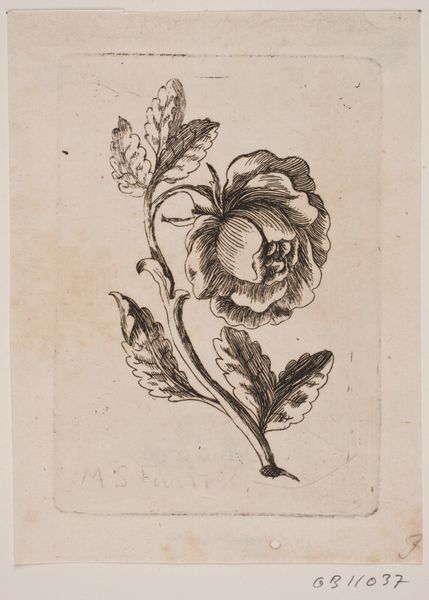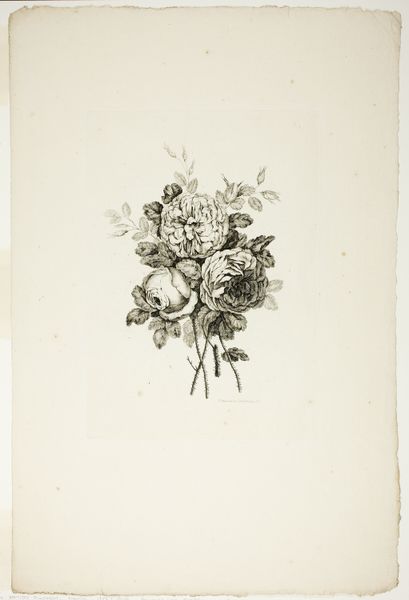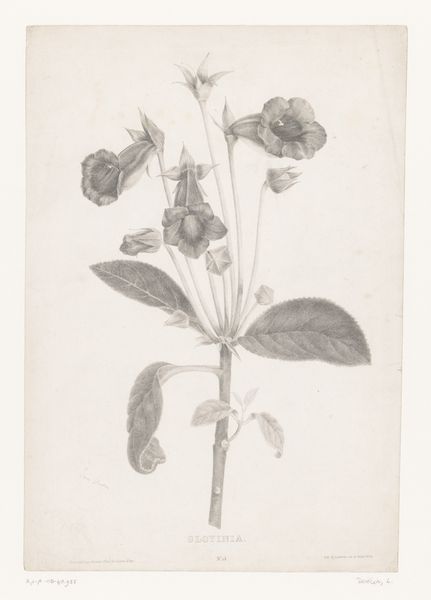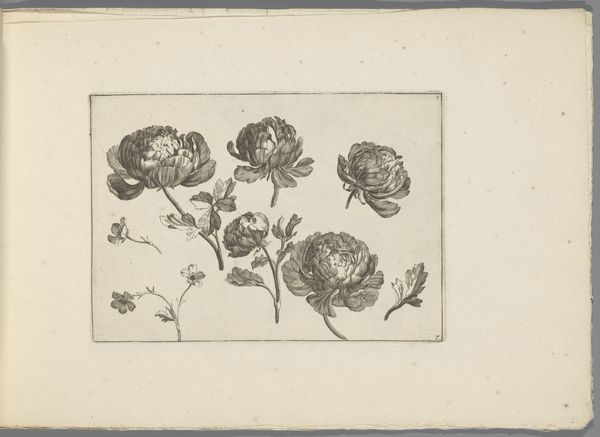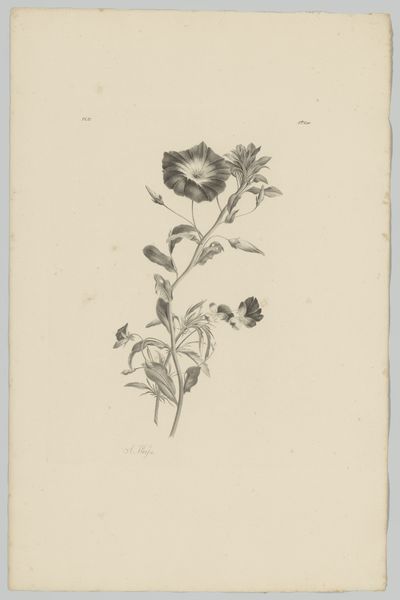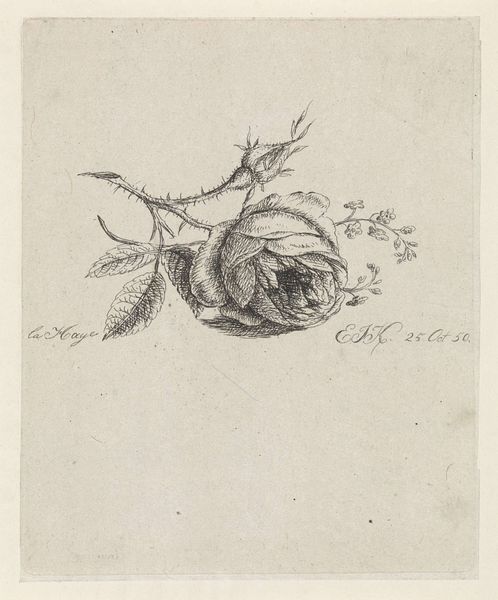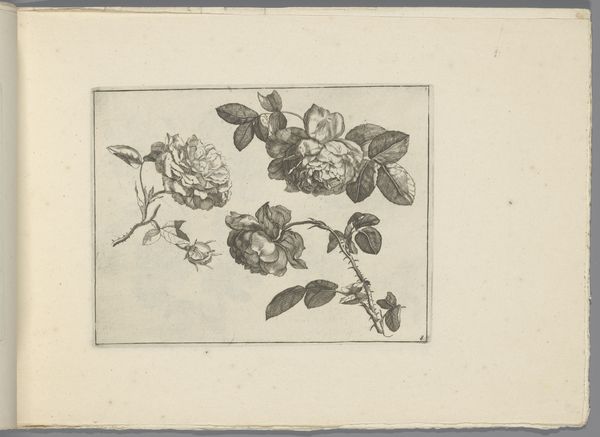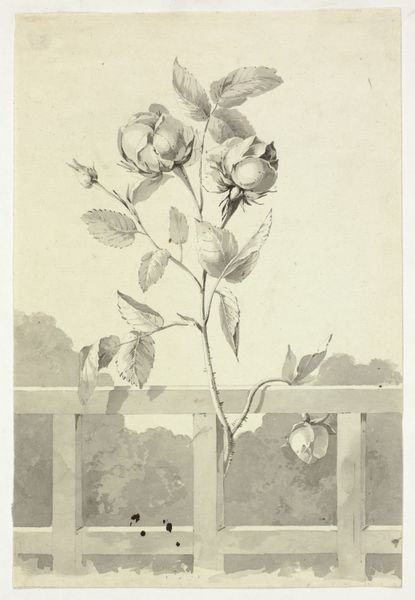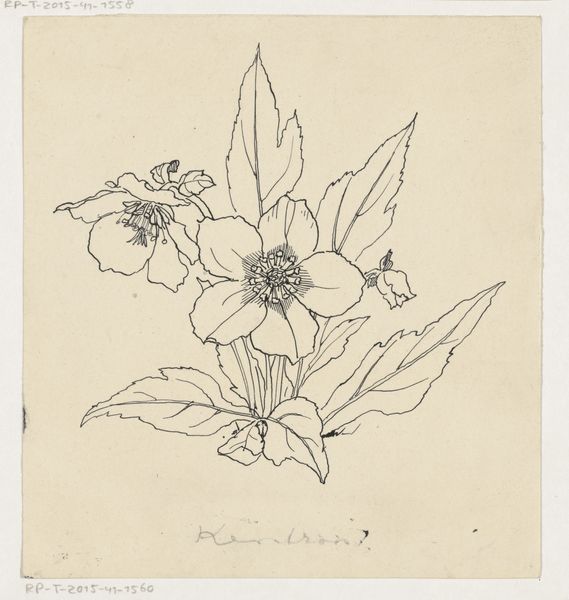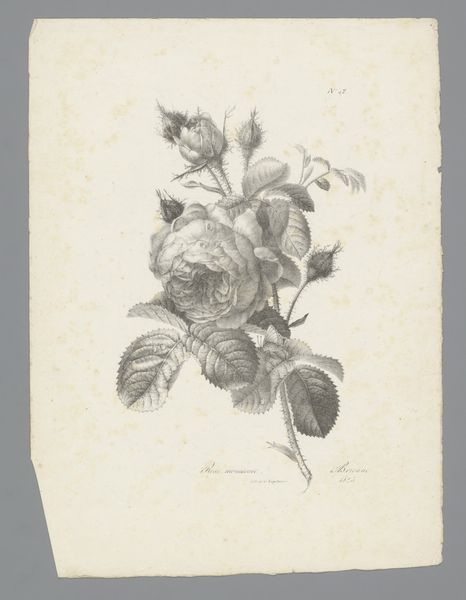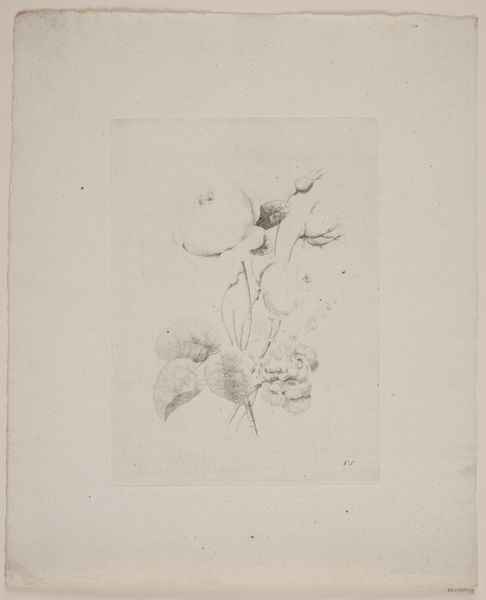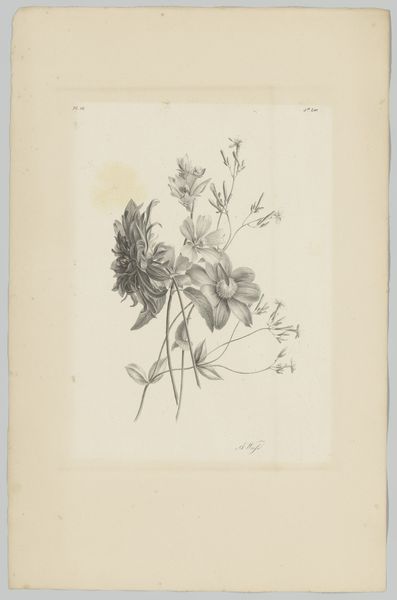
drawing, ink, pen
#
drawing
#
etching
#
figuration
#
form
#
ink
#
pen-ink sketch
#
botanical drawing
#
line
#
pen
#
botanical art
#
realism
Dimensions: height 126 mm, width 113 mm
Copyright: Rijks Museum: Open Domain
Curator: Here we have "Wilde Roos," a pen and ink drawing by Willem Wenckebach, created sometime before 1893. It’s part of the Rijksmuseum's collection. The drawing uses a wonderful linear style to depict a wild rose. Editor: My first impression is of quiet observation, like pausing on a country walk. There’s a subtle energy to the flower; not static, not sentimental, just beautifully, scientifically, itself. Curator: Precisely! It shows a realism that favors naturalism and detailed examination over idealism. Notice the mark-making—look closely at the hatching of those leaves and the delicate shading of the petals. This reveals the labor of close looking and skilled rendering with such limited, fundamental materials. Editor: Absolutely. You can almost feel the nib of the pen on the paper, a lovely handmade quality despite its botanical precision. It feels honest, devoid of fuss, like he’s paying homage to nature through careful workmanship. Did Wenckebach do much botanical work? Curator: While he may not be widely known primarily for botanical studies, Wenckebach did engage with natural themes throughout his career. Consider also the accessibility of botanical art; its proliferation via inexpensive prints speaks volumes about nineteenth-century education and engagement with the natural world. These pen and ink works allowed even modest budgets to experience some aspect of beauty through observation and skilled craftsmanship. Editor: That’s a very good point! It certainly doesn’t come across as 'high art', does it? Which, oddly enough, only enhances the intimacy of the work for me. It connects the viewer directly with Wenckebach's seeing, his attentive gaze. It seems so immediate, I'm certain there was no machine assisting the artistic labour here. Curator: A critical reading suggests Wenckebach engages both aesthetic pleasure and documentary record here; what could become of this? The work transcends being simply a drawing. Consider what kind of access and education that kind of creative work afforded to audiences during its original viewing. Editor: So much packed into such a simple scene. The choice to focus on a 'wilde roos' is key: a plant that’s resilient, uncultivated. Perhaps, in his humble work, Wenckebach wanted the viewer to reflect on their everyday life, the raw energy of nature? Curator: Indeed! A reminder of the quiet yet vital role that everyday craft and labor have in shaping culture. Editor: A small drawing, but a huge insight into seeing and making!
Comments
No comments
Be the first to comment and join the conversation on the ultimate creative platform.
